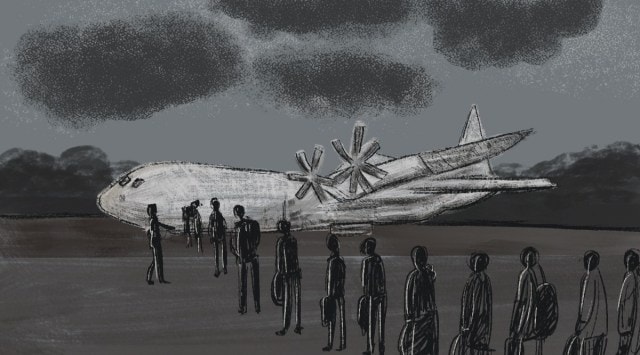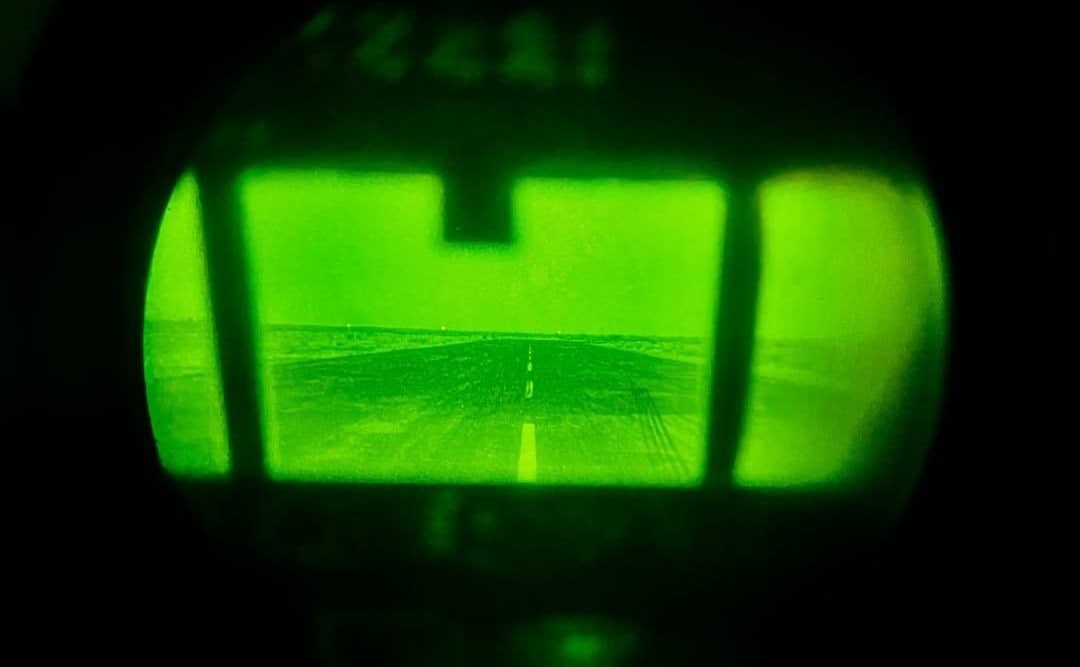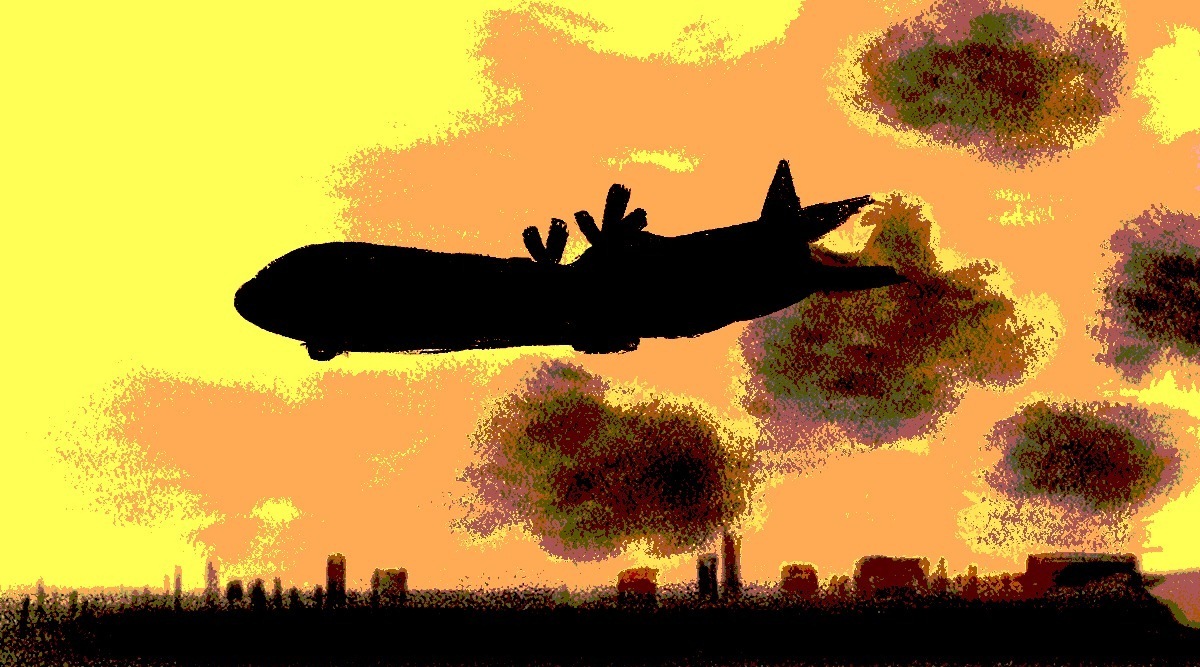The lights of the C130J Super Hercules transport aircraft twinkled in the pitch-dark blackness of the night. Without navigational approach aids or guiding lights, the pilots were almost blindsided as the aircraft approached the narrow, damaged airstrip at Wadi Seidna in Sudan.
The weather had deteriorated too – the aircraft hit turbulence as it encountered severe icing. The risks were high. The wreckage of an aircraft lay off the airstrip. Had it been shot at? Had it encountered a technical failure? No one knew.
Yet, for the pilots and Garud Commandos on board the C130J, the call of duty – to rescue a group of stranded Indians – far outweighed any sense of risk.
Hours after the grey turboprop craft touched down on the bumpy airstrip, the Indian Air Force had pulled off one of the most daring operations it has ever conducted – rescuing 121 Indians stuck in and around the Sudanese capital of Khartoum as part of Operation Kaveri in April this year.
This is the story of that mission.
April 27. It had been days since India launched Operation Kaveri to evacuate its nationals stuck in Sudan, where an intense conflict had broken out between the Sudanese Armed Forces and the Rapid Support Forces (RSF), rival factions of the country’s military government.
The Indian government pressed the IAF’s transport aircraft, the C130J Super Hercules and the C17 Globemaster, and naval ships INS Sumedha and INS Tarkash into action. With the airfield at Khartoum not open for operations, those stranded were brought from various parts of the country to Port Sudan. Over 3,800 Indians were eventually brought back under this mammoth operation.
But around 200-odd people, including the embassy staff, were still stuck in Khartoum and the journey to Port Sudan was too risky to be undertaken. That’s when Wadi Seidna emerged as an alternative evacuation point.
Story continues below this ad
 IAF evacuated Indians from Wadi Seidna in Sudan as part of Operation Kaveri in April this year. (Photo credit: Indian Air Force)
IAF evacuated Indians from Wadi Seidna in Sudan as part of Operation Kaveri in April this year. (Photo credit: Indian Air Force)
About 40 km north of Khartoum, the World War-II era military base at Wadi Seidna lay in a desert to the west of the Nile. Despite a 72-hour ceasefire between the warring Sudanese forces, the airbase had been reporting incidents of sporadic firing and fighting.
The final go-ahead for the Wadi Seidna mission came on the afternoon of April 27.
The IAF team stationed in the Saudi Arabian city of Jeddah to coordinate the rescue operations moved to the air base, located an hour from their hotel. En route to the air base, the team discussed and finalised operational details — ways for the aircraft crew and the Garud commandos to communicate, authentication of Indian evacuees on the ground and possible threats. A detailed briefing was carried out in the minutes before the launch and team members were assigned specific tasks they were to undertake on landing.
“We knew that the situation on the ground was tense and there were no resources. While the Sudanese army had access to the airstrip, the rival RSF fighters were on the fringes. So, there was always the risk of being caught in the crossfire. And we knew the airfield was in bad shape – it was completely unlit with no navigational aids or radio contact – and that the weather wouldn’t hold up,” one of the pilots who flew the C130J to Wadi Seidna told The Indian Express.
Story continues below this ad
 The IAF aircraft’s engines were kept on throughout the operation, in case the aircraft had to take off at short notice. (Photo credit: Indian Air Force)
The IAF aircraft’s engines were kept on throughout the operation, in case the aircraft had to take off at short notice. (Photo credit: Indian Air Force)
Yet, the IAF team in Jeddah decided to stick to their plans. If they took off immediately, the team would be able to make it with about four hours left for the fragile ceasefire between the two Sudanese groups to end – a tiny window within which the evacuation had to be carried out.
Around 8 pm, the C130J took off from Jeddah with two pilots, the standard crew — a navigator, a flight gunner, a flight engineer and two-three technical staff — and eight Garud Commandos, the IAF’s crack team of special forces.
Besides weapons and equipment for any contingency, the team carried night vision devices and tactical flashlights for the night operation.
On the two-hour flight from Jeddah to Wadi Seidna, the officers went over their SOPs.
Story continues below this ad
 The IAF approached the damaged airstrip at Wadi Seidna in Sudan using night vision equipment. (Photo credit: Indian Air Force)
The IAF approached the damaged airstrip at Wadi Seidna in Sudan using night vision equipment. (Photo credit: Indian Air Force)
“Having practised for such contingencies several times, it was just a question of adapting our procedures to the situation on hand,” said one of the Garud officers involved.
Trouble began soon after the aircraft entered Sudanese airspace. The weather started deteriorating and the aircraft hit turbulence.
Defence sources said the approach to the airstrip was made using night vision equipment such as electro optical-infrared sensor, night-vision goggles and heads-up display cues.
Around 10 pm, the aircraft finally touched down on the runway.
Story continues below this ad
While the pilots remained inside the aircraft, the Garud team leader, along with three other commandos, took control of the ground operations. Other crew members and the remaining Garud commandos remained in and around the aircraft to monitor communications, deal with possible threats and to help passengers with formalities required to board the aircraft.
The unmarked ‘evacuation point’ was a few metres away from the airstrip. On their way there, the Garud commandos crossed two temporary checkpoints manned by the Sudanese army. “This checkpoint was about 600 metres away from the aircraft. We quickly scanned the crowd to see if we could spot any Indians. But there was none, so we moved on,” the Garud officer recalled.
Around 300 m ahead, there was another checkpoint, with over 1,200 people of different nationalities waiting over a 2-sq km area. “The situation here was chaotic, with hundreds jostling to be evacuated. We spotted the Indians here,” said the officer.
 The passengers stood in a file, shuffling along as they moved towards the aircraft. (Illustrations: Vishnu Ram)
The passengers stood in a file, shuffling along as they moved towards the aircraft. (Illustrations: Vishnu Ram)
The team got down to the laborious task of locating, authenticating, verifying, and frisking each of the evacuees. The process got streamlined once the Defence Attache to the Indian Mission in Sudan, Lt Col Gurpreet Singh, introduced himself. Among those waiting to be evacuated were two heavily pregnant women, and several children and senior citizens. Realising that they were finally on the verge of being rescued after several harrowing hours, many of them broke down.
Story continues below this ad
The minutes kept ticking by. Though there was still some time left for the ceasefire to run out, the team had another worry. The engines of the C130J had to be kept on throughout the operation – a quick-response strategy in case the aircraft had to take off at short notice – which meant they had enough fuel for only an hour and a half.
 Evacuees were escorted to the IAF aircraft from the unmarked ‘evacuation point’, which lay a few metres away from the narrow airstrip at Wadi Seidna. (Photo credit: Indian Air Force)
Evacuees were escorted to the IAF aircraft from the unmarked ‘evacuation point’, which lay a few metres away from the narrow airstrip at Wadi Seidna. (Photo credit: Indian Air Force)
The team was now ready to escort the evacuees to the aircraft. The passengers stood in a file, shuffling along as they moved towards the aircraft.
Finally, around 11.45 pm, the C130J took off around 11.45 pm, plunging the runway into darkness.
Minutes later, a Turkish plane that attempted to land at Wadi Seidna was shot at.



 Around 200-odd people, including the embassy staff, were stuck in Khartoum and the journey to Port Sudan was too risky to be undertaken. That’s when Wadi Seidna emerged as an alternative evacuation point. (Graphic: Abhishek Mitra)
Around 200-odd people, including the embassy staff, were stuck in Khartoum and the journey to Port Sudan was too risky to be undertaken. That’s when Wadi Seidna emerged as an alternative evacuation point. (Graphic: Abhishek Mitra) IAF evacuated Indians from Wadi Seidna in Sudan as part of Operation Kaveri in April this year. (Photo credit: Indian Air Force)
IAF evacuated Indians from Wadi Seidna in Sudan as part of Operation Kaveri in April this year. (Photo credit: Indian Air Force) The IAF aircraft’s engines were kept on throughout the operation, in case the aircraft had to take off at short notice. (Photo credit: Indian Air Force)
The IAF aircraft’s engines were kept on throughout the operation, in case the aircraft had to take off at short notice. (Photo credit: Indian Air Force) The IAF approached the damaged airstrip at Wadi Seidna in Sudan using night vision equipment. (Photo credit: Indian Air Force)
The IAF approached the damaged airstrip at Wadi Seidna in Sudan using night vision equipment. (Photo credit: Indian Air Force) The passengers stood in a file, shuffling along as they moved towards the aircraft. (Illustrations: Vishnu Ram)
The passengers stood in a file, shuffling along as they moved towards the aircraft. (Illustrations: Vishnu Ram) Evacuees were escorted to the IAF aircraft from the unmarked ‘evacuation point’, which lay a few metres away from the narrow airstrip at Wadi Seidna. (Photo credit: Indian Air Force)
Evacuees were escorted to the IAF aircraft from the unmarked ‘evacuation point’, which lay a few metres away from the narrow airstrip at Wadi Seidna. (Photo credit: Indian Air Force)





